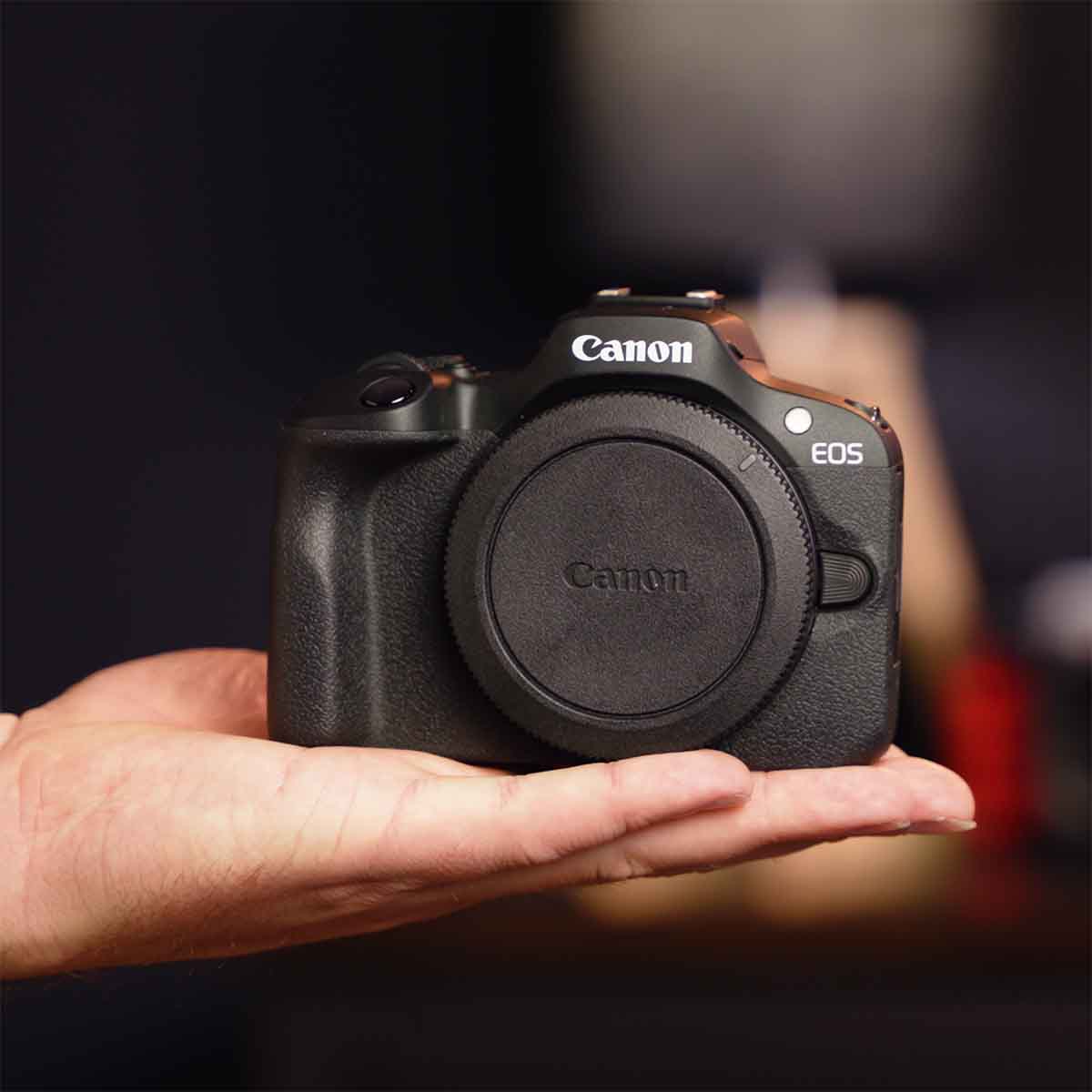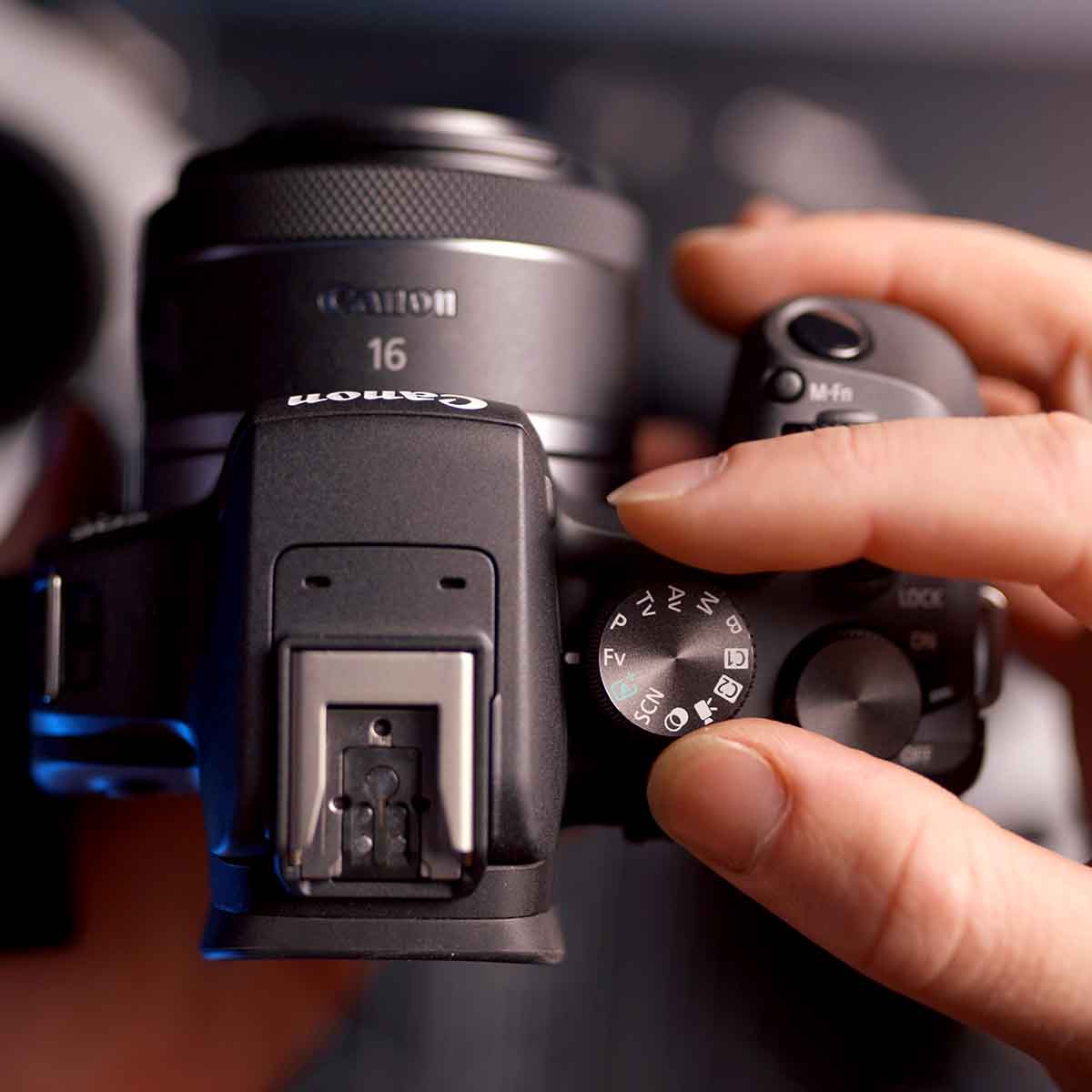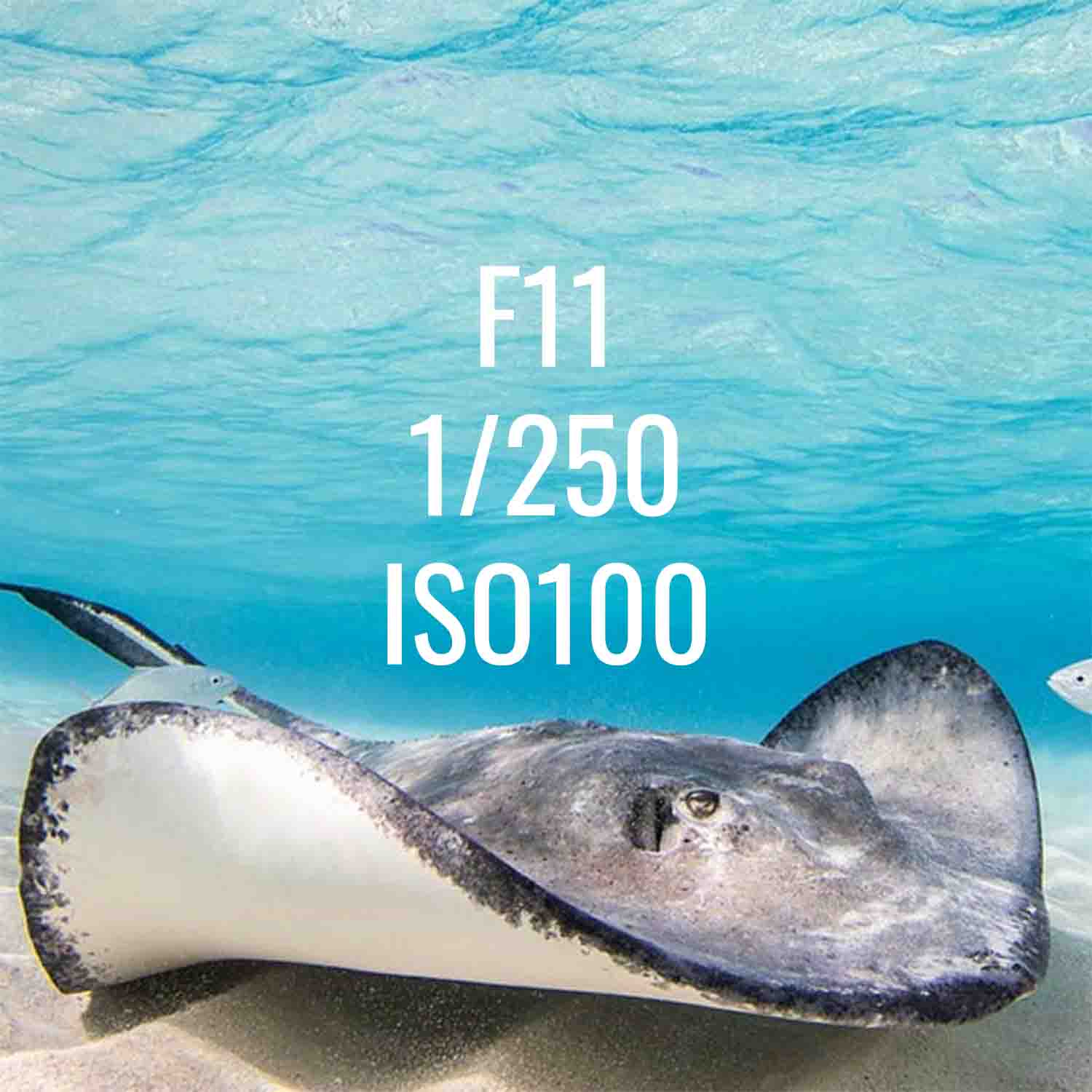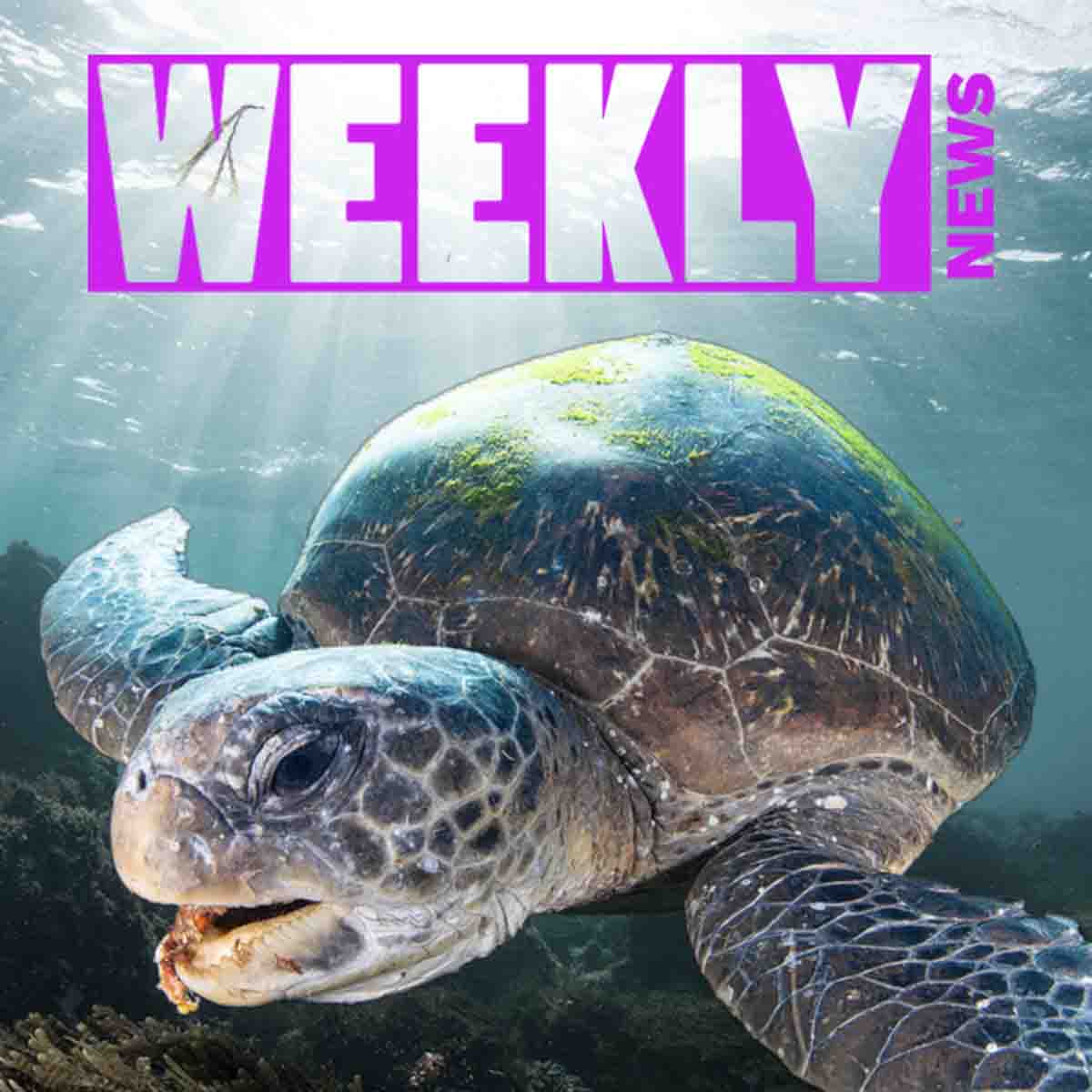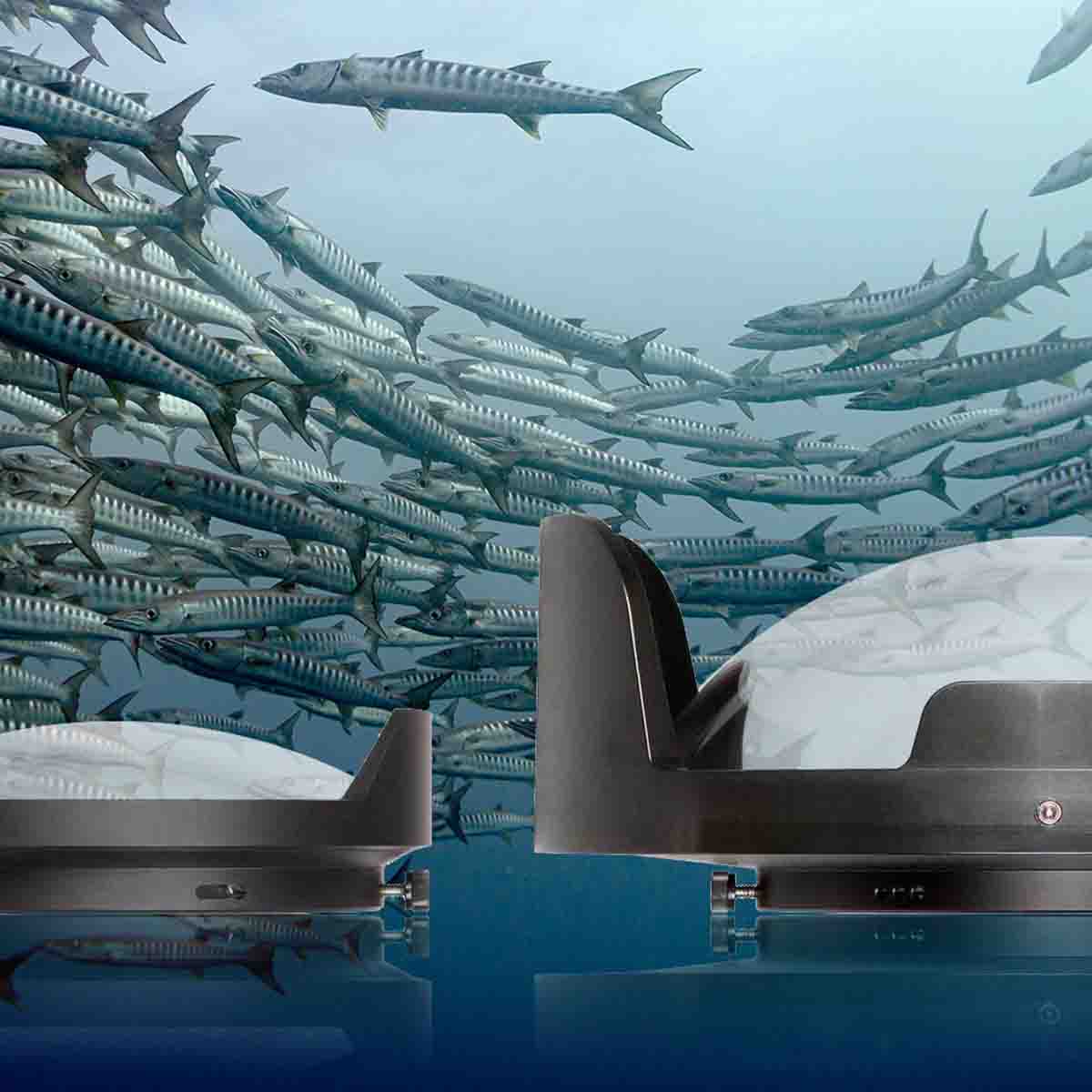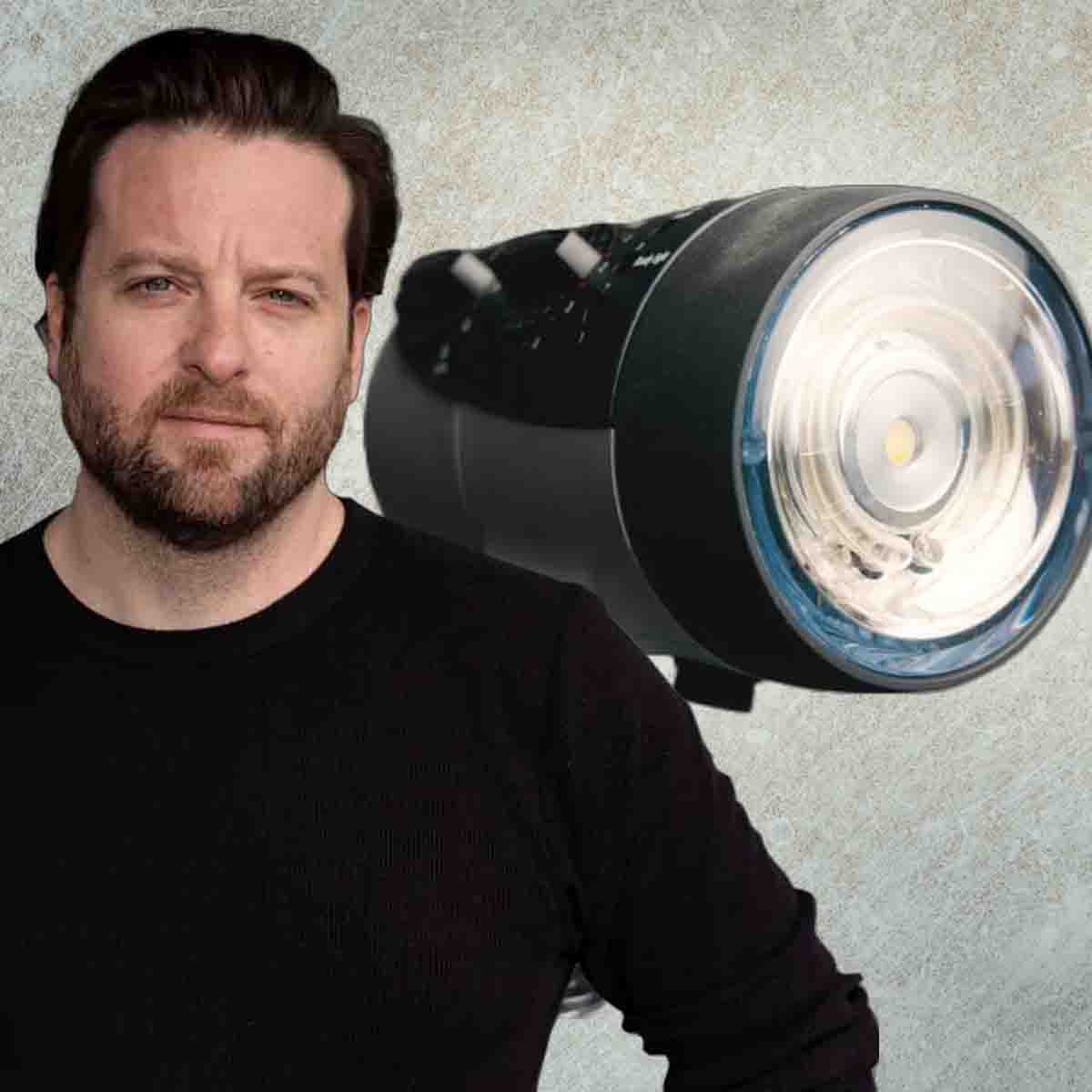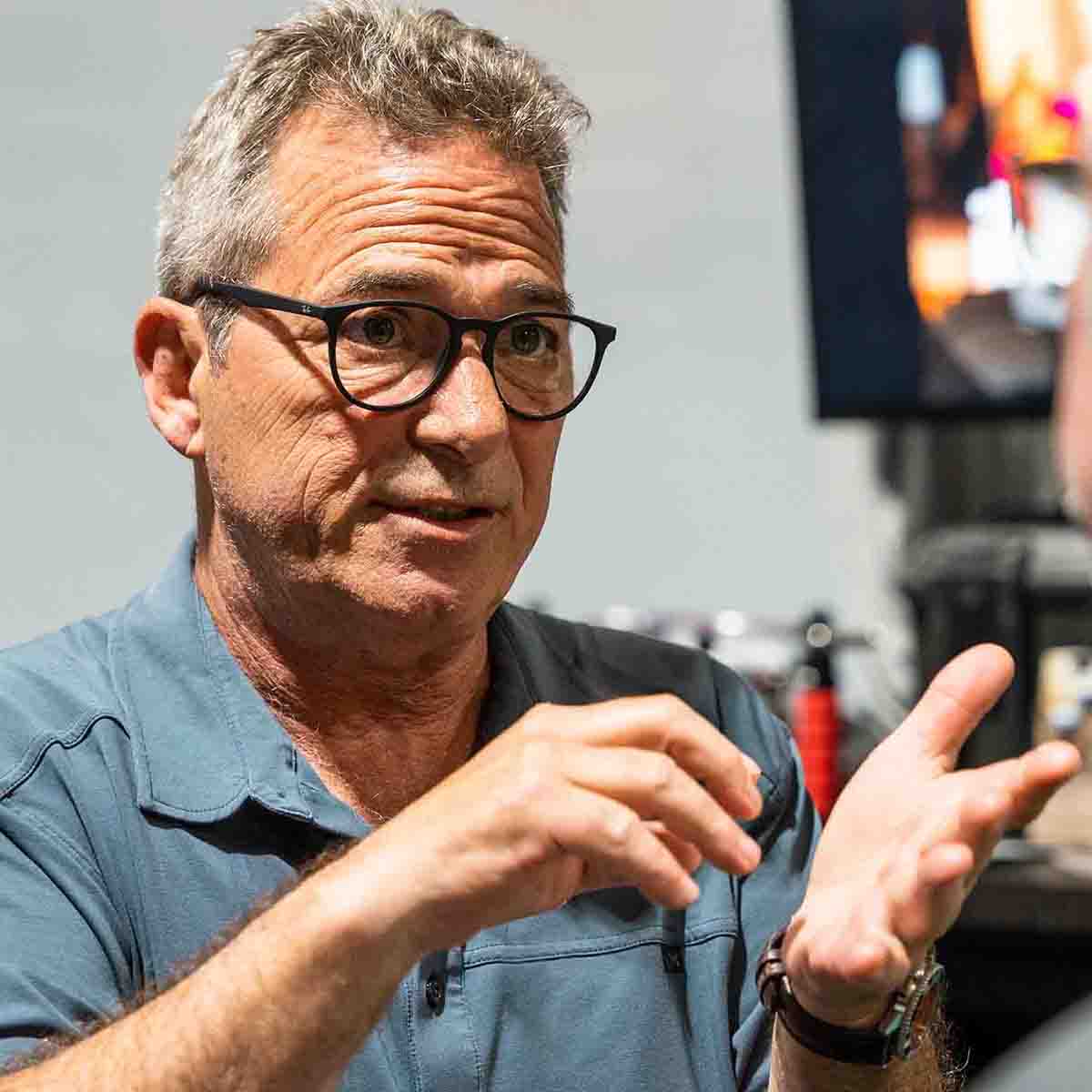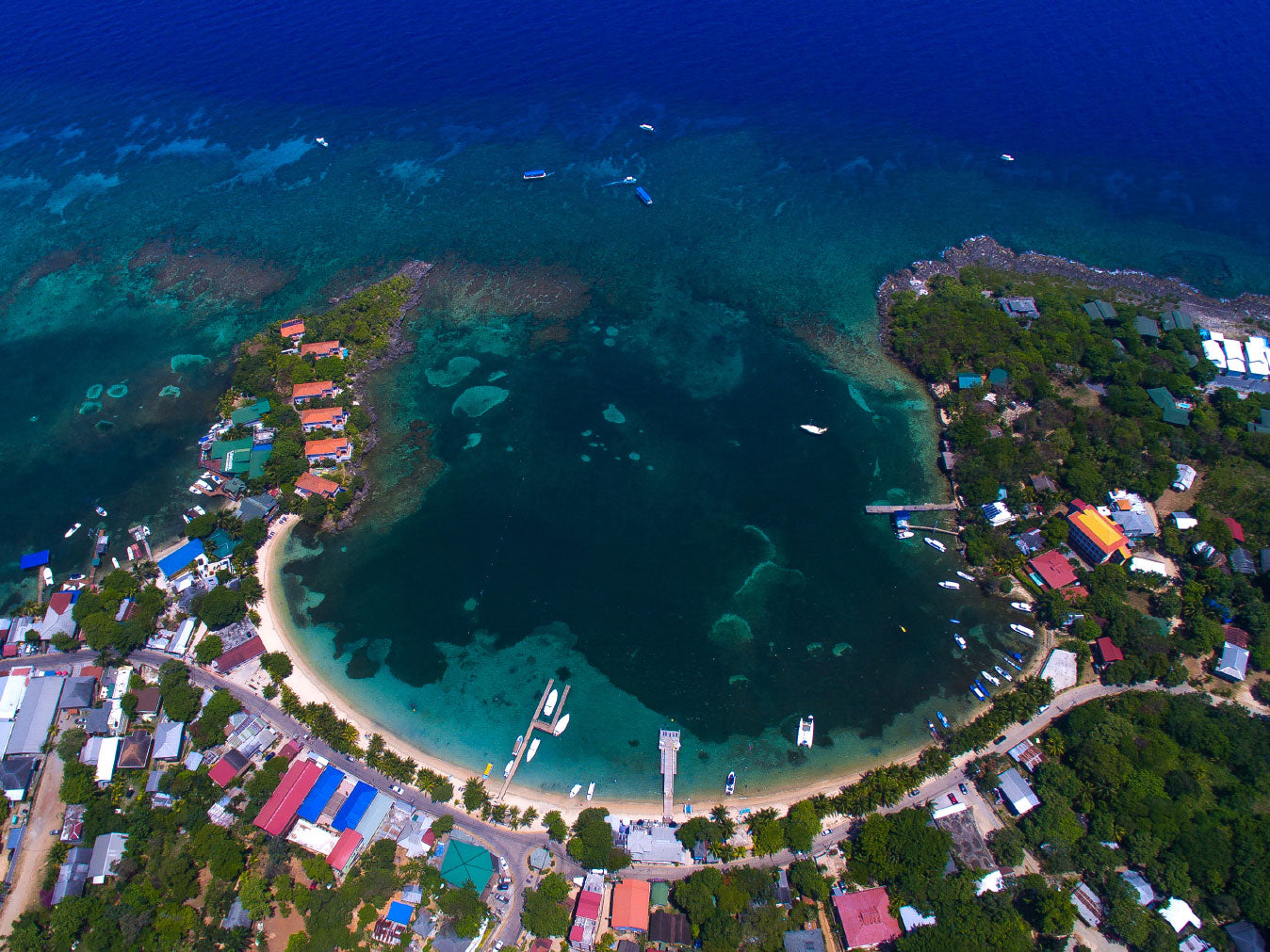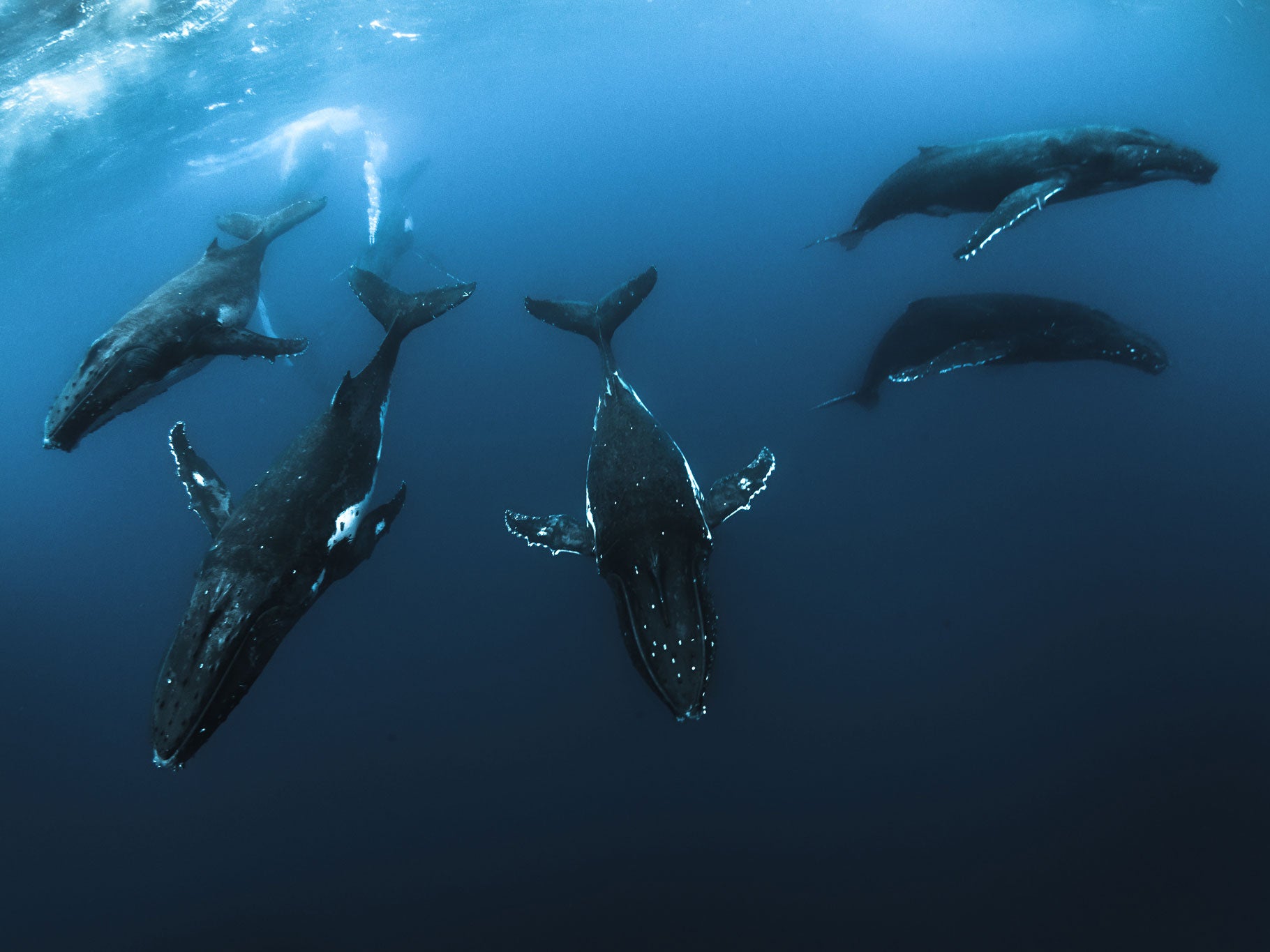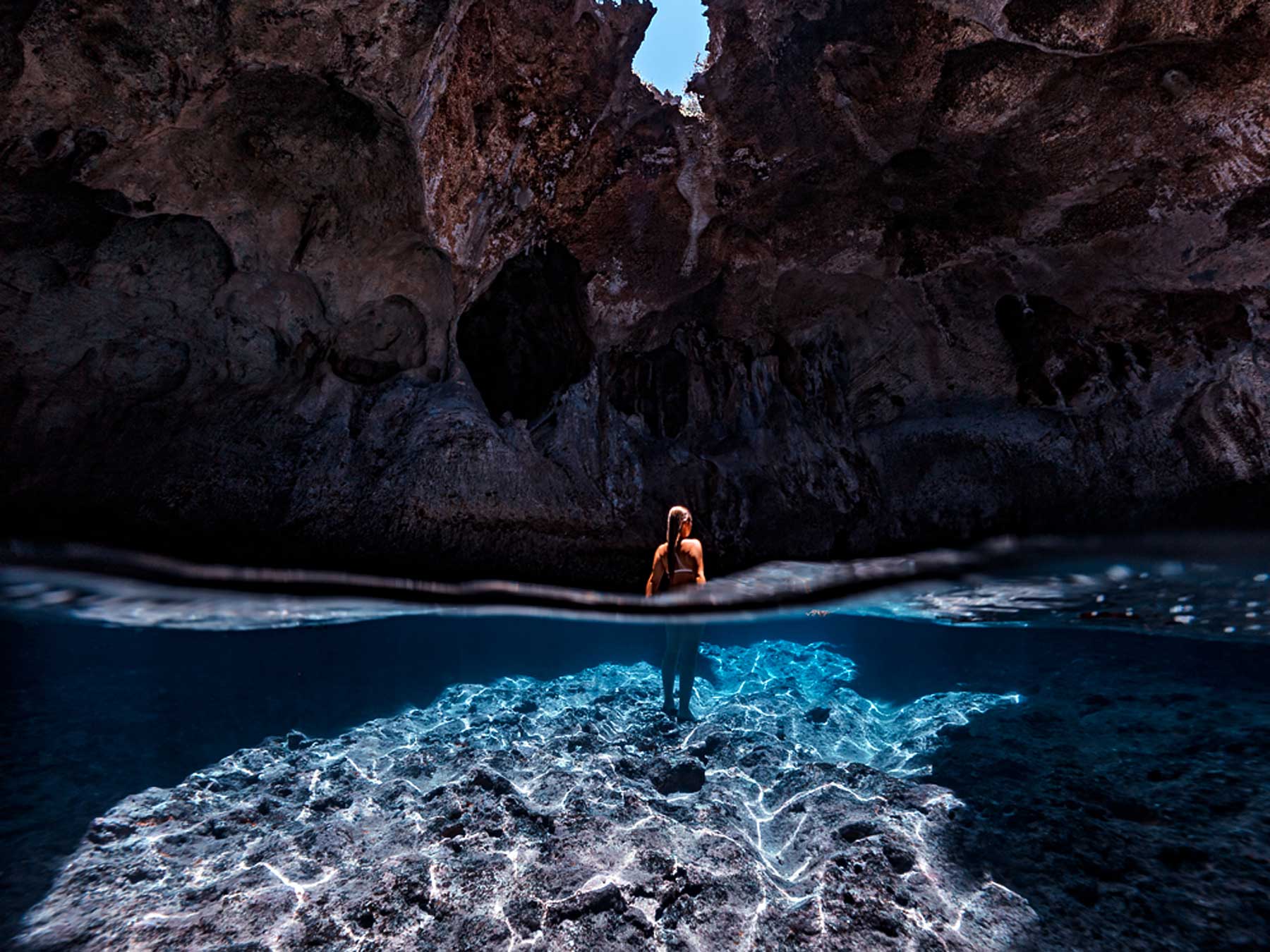By Maggie Jackson & Ambassador Shawn Jackson
While it may not be the most well known vacation spot, divers have long known this tiny island diving gem as home to friendly people, beautiful beaches, great food, and, of course, fabulous diving!

Located approximately 36 miles off the northern coast of mainland Honduras, Roatan is the largest of the Islas de la Bahia (Bay Islands). The island is long and narrow, stretching about 36 miles long and only a couple miles wide at its widest point. A stunning stretch of the second largest barrier reef system in the world, the Mesoamerican Barrier Reef, sits just out front.
Logistics
Roatan is easily accessible, with direct jet flights from Houston, Dallas, Miami, along with several U.S. cities throughout the year. Easy connections from other parts of Central America, several special flights from Canada and Europe make it a relatively easy destination. When flying from Chicago, for example, a traveler can depart in the early hours of the morning and be on a Roatan beach for lunch.
U.S. citizens can travel to Roatan without a visa and can expect an immigration officer to give them up to a 90-day stay. It’s worth noting that, on occasion, travelers may be asked to provide proof of return or continued travel. Those new to Roatan should be prepared to provide some kind of foreseen address for their stay on the island when filling out immigration paperwork.

U.S. dollars can easily be changed for Lempiras but there’s no real urgency as dollars are also readily accepted. Visitors should remember that this is a convenience and large bills will be returned with change in local currency.
The famous West Bay Beach stretches along one end of the northern side of the island with shallow water while the south shore boasts a rocky ironshore coast and drop off to deep water with more current and breeze during most of the year. West Bay Beach is home to many of the larger scale resorts which, in recent years, have added dive shops to their offerings. Visitors should expect the beach to be bustling on cruise ship days. The crystal clear water provides the perfect refuge for the sometimes-crowded sand.

For those hoping for a more relaxed diving experience, mixed with casual nightlife and easy access to restaurants, West End offers more of a village experience, with countless small dive shops, bars, shops, and restaurants.
The East End of the island is less populated and dive shops are few and far between, but the area is favored by those who prefer to be truly off the beaten path.
Favorite Dive Sites
Overheat Reef
A great dive site located off Sandy Bay, Overheat Reef features a nice wall drop off with an easy view of the area. Colorful reefscapes are the perfect backdrop for Green and Hawksbill turtles often seen snacking on coral or napping along the reef. This site is a good bet for getting up close and personal shots of these turtles and occasionally rays as well.

Half Moon Bay Wall
Right out front of West End’s Half Moon Bay, this wall dive is home to eels, turtles, and healthy coral. A favorite site for West End dive shops, those staying and diving in West End can expect to visit this site fairly early on in their stay. Coming out of Half Moon Bay in West End, the boat ride to this site lasts literally one minute. Short boat rides are just one of the perks of Roatan diving!

Half Moon Bay Night Dive
When most West End dive shops are tucked in for the night, and bars and restaurants are buzzing along the stretch of road adjoining the beach, small groups can head out in the bay for a shallow night dive.
For the macro lover, this opportunity is one not to miss with tiny creatures making their way along the reef in the darkness.

West End Wall
Not to be confused with Half Moon Bay Wall, West End Wall is located at the westernmost point of the island, known by islanders as West End Point. This area makes for interesting diving with the northern and southern shores of the island coming together and making for unpredictable current which often attracts schools of fish.

El Aguila
This commonly visited wreck dive, El Aguila (the Eagle) is a ship that, despite its intentional sinking in one piece in the late 90s, has since seen its fair share of storms, causing the ship to break apart. The deepest portion sits at about 105-110 feet with portions resting in shallower water.

Divers can expect large groupers, free swimming Moray eels, garden eels, and some interesting macro crabs and shrimp. The wreck is easily accomplished in a single dive and divers who may not be up for the deeper end of the spectrum, can stick to the mast area in fairly shallow water around 40-70 feet down.

Hole in the Wall
A rite of passage for Roatan divers, Hole in the Wall is one of a couple cave dives where well-timed visitors can find themselves enveloped in the magical casts of thousands of silversides that take up temporary residence inside the cave. Out in the blue, schools of Jacks can often be seen swimming in the open.

Those who love swim-throughs start in the shallow right off the boat, later maneuvering deeper and deeper until finally opening up in 70 or 80 feet of water. Divers can look back and see the “hole in the wall” with light from the surface filtering through.
Mandy’s Eel Garden
While maybe not the most obvious favorite, Mandy’s Eel Garden is a fun site that starts with a short lived view of the tiny garden eels as they poke their heads up from the sand and look like blades of grass. As the dive begins, divers jump in and, on a bright day, can see a huge expanse below with sand reflecting the light. Divers then make their way to their deepest point to hang patiently and quietly in the sand and wait for the garden eels to bravely peek out.
When it’s time to gradually come up from the deep, photographers will find some nice macro opportunities. Healthy coral can be found in the shallower water on the way back to the boat.
The Bottom Line?
Roatan is a perfect spot for a unique dive vacation. Veteran and new divers alike will find a dive site that makes their list of favorites. Manageable travel options and super short boat rides to dive sites make Roatan a bang for your buck dive location. Divers can easily get three dives a day in and round out the evening with a night dive or a delicious seafood meal at an open air restaurant on the beach.
What not to do?
A visit to a bank in downtown Coxen Hole will cure you of wanting to make a return trip to town. Remember that there’s no real need to visit the bank to exchange currency unless you’re staying a long time. Using dollars and getting change in “Lemps” works just fine if you’d rather save your time for sightseeing and diving.
West Bay Beach on cruise ship days can be a no-go for those who don’t like a busy beach scene.

The Roatan Marine Park works hard to educate and conserve. With an island this small, protecting the natural resources, habitats, and animals within them makes for important work. Visitors to Roatan, and places like it can help in these efforts by being aware of disruption to the natural order for profit. Steering clear of things like dried sea horses and conch shells for sale, destroyed mangrove ecosystems, or illegal spear fishing within the Marine Park are just a few ways visitors can avoid negatively impacting the island. Most importantly, being aware of your single use plastic usage is especially crucial on an island. Consider eco friendly options for cosmetics, skipping the plastic soda bottle, and following Roatan’s “Last Straw” initiative to rid the island of plastic straws.
Our favorites?
We’re West End people. Check out relaxed and friendly diving at Native Sons Dive Shop in West End, including the tiny and delicious Yahongreh food shack on the premises. For local art and beautiful gifts, Waves of Art Gallery on the main road in West End is the perfect stop. For fabulous island street food, stop in to see Jendalyn across from the West End Baptist Church or Doña Rosi at Anthony’s Chicken down the road.
All images Copyright © 2019 Shawn Jackson
 Ambassador Shawn Jackson is a native islander from the Caribbean island of Roatan, Bay Islands, Honduras. He began his professional underwater photography career as a Photo Pro at Anthony's Key Resort. From there, he left AKR to start his own professional photography firm handling commercial clients and focusing on his underwater fine art photography. His work has been seen in countless dive magazines including Scuba Diving and Sport Diver. His underwater video footage has also been featured on ESPN as well as several other TV and educational programs. Read more...
Ambassador Shawn Jackson is a native islander from the Caribbean island of Roatan, Bay Islands, Honduras. He began his professional underwater photography career as a Photo Pro at Anthony's Key Resort. From there, he left AKR to start his own professional photography firm handling commercial clients and focusing on his underwater fine art photography. His work has been seen in countless dive magazines including Scuba Diving and Sport Diver. His underwater video footage has also been featured on ESPN as well as several other TV and educational programs. Read more...
Additional Reading
Planning a Trip to Tonga to Swim with Humpback Whales
Planning a Shore Diving Trip to Bonaire
Freediving a 60 Ton Statue in the Bahamas with Jenna Martin
An Insiders Guide to Diving Wakatobi Resort Indonesia
Planning a Trip to Photograph Manatees in Crystal River, Florida
Crocodiles, Cenotes, and Chinchurro with Ken and Kimber Kiefer



